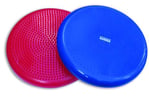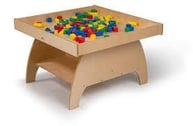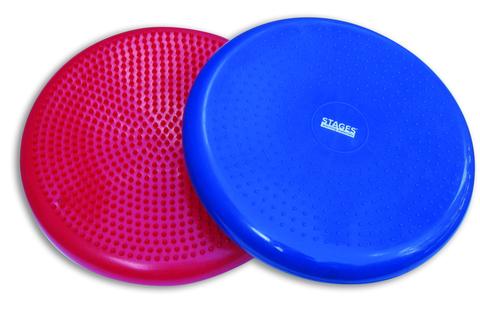Inclusion Toolkit: Top Ten Products to Accommodate Students with Autism in the Classroom
The beginning of a new school year can be a difficult time for some children with autism. Shifting from the comfort of home to an environment packed with loud voices, stiff chairs, slamming doors, and a new structure can trigger anything from distraction and discomfort to full meltdowns.
 Your child’s IEP should have accommodations to make their classroom a positive environment and remove any barriers to learning. But sometimes, parents may see accommodations written vaguely. “Frequent breaks” doesn’t answer important questions – how frequently? How long? And most importantly, what will the break look like? Each accommodation requires specific planning, and often specific materials.
Your child’s IEP should have accommodations to make their classroom a positive environment and remove any barriers to learning. But sometimes, parents may see accommodations written vaguely. “Frequent breaks” doesn’t answer important questions – how frequently? How long? And most importantly, what will the break look like? Each accommodation requires specific planning, and often specific materials.
In my experience as a special education teacher, my students who had autism needed an adaptive classroom environment and supportive materials the most. But for many special education teachers, getting the right materials in the general classroom can be a difficult process. Funding is limited, and ordering extra materials can take over a month. Some classroom teachers are resistant to environmental changes. And some tools are just not good. Constantly trying and discarding different activities, sensory tools, and trackers will not only fail to meet a child’s needs, but more than likely backfire and overwhelm them.
For parents who want their child with autism to hit the ground running this school year, investing in the right accommodation products is a great option. Or instead, parents may want to be prepared with a list of materials for the school to implement accommodations quickly.
I used and recommend these ten products because they are simple, can be used independently, and blend into the classroom environment without disruption. Happy shopping!
- Daily Outline
- SchKIDules Visual Schedules Activity Magnets - The best way to transition a child with autism to a new schedule is to show it to them. This schedule has 132 activity magnets that can be put on the classroom dry erase board and be easily switched out as school activities shift day to day.
- Choice Board
- Speech Therapy: AAC Choice Boards - For students developing verbal skills, having the option to communicate choices is essential. This speech language pathologist-made system has 375 choice pictures. What makes it stand out are the variety of two, three, four, and six choice boards – a child who may be overwhelmed with too many choices can start with two. Remember to laminate!
- Transition Support
- Time Timer - Students with autism are likely to feel more comfortable ending a task if they have a heads up beforehand. This visual timer can be used to motivate students to work a certain amount of time, or let a child know when their break is over.
- Sensory Tool – Kinesthetic
 Wiggle Cushion - This cushion blows up to let your child bounce around, and also has ridges for tactile stimulation. It is less visible than a ball chair, and your child can take it with them if they move classrooms or chairs during the day.
Wiggle Cushion - This cushion blows up to let your child bounce around, and also has ridges for tactile stimulation. It is less visible than a ball chair, and your child can take it with them if they move classrooms or chairs during the day.
- Sensory Tool – Kinesthetic
- Bouncy Chair Band - For children who do not want to move their whole body on a wiggle cushion, a chair band to bounce or stretch their feet can be a great way to let them release some energy while keeping their hands free to work.
- Sensory Tool – Stimulation
- Anemone Desk Fidget - Classroom teachers usually do not like fidget toys, because they can be a distraction to the student using it and classmates around him. This desk fidget is soft, silent, and out of sight.
- Sensory Tool – Calming
- Cozy Canoe - This alternative to the bean bag chair goes beyond comfort and provides needed pressure for a child who needs sensory relief. It will definitely be welcomed into the classroom, and all students can use it as a reading spot!
- Break Time
- Discovery
 Table - When your child takes a timed break, the activity should be engaging but not rewarding, because they may start to seek out breaks as an escape instead of an opportunity to refocus. This table lets teachers change activities – the tray can be filled with sand one week and have a puzzle the next.
Table - When your child takes a timed break, the activity should be engaging but not rewarding, because they may start to seek out breaks as an escape instead of an opportunity to refocus. This table lets teachers change activities – the tray can be filled with sand one week and have a puzzle the next.
- Discovery
- Expressive Language Support
- Language Builder Complete 10-Box Autism Education Set - While this set is technically a learning activity, expressive language skills are essential for full inclusion in a classroom community. The entire IEP team can use this comprehensive Language Builder Set as homework, as a resource service, or as a classroom activity.
- Social Interaction
- Let’s Talk About... - While learning the language skills to make friends with the Language Builder Set, students can use this tool to build their social skills and make conversations easier. The cards are also sorted by subject, so if your child has a strong interest in one area, they can learn to enjoy discussion by talking about something they love.
These are the products I found most useful in the classroom, but every child with autism is unique. You know your own child best and can help your child’s teacher be figuring out what supports might work best in the classroom. Stages Learning Materials has assembled a carefully selected collection of supportive resources from different companies and you may see additional products there that may be useful.
.jpg)
Emma Shanahan
Emma Shanahan is a Masters of Education candidate at the Harvard Graduate School of Education, focusing on Prevention Science and Practice. She previously taught as an elementary special education teacher in Memphis for four years, serving as a department chair for the last three. Emma is passionate about providing early intervention services to students with disabilities, as well as advocating for both parents and schools in the IEP.




